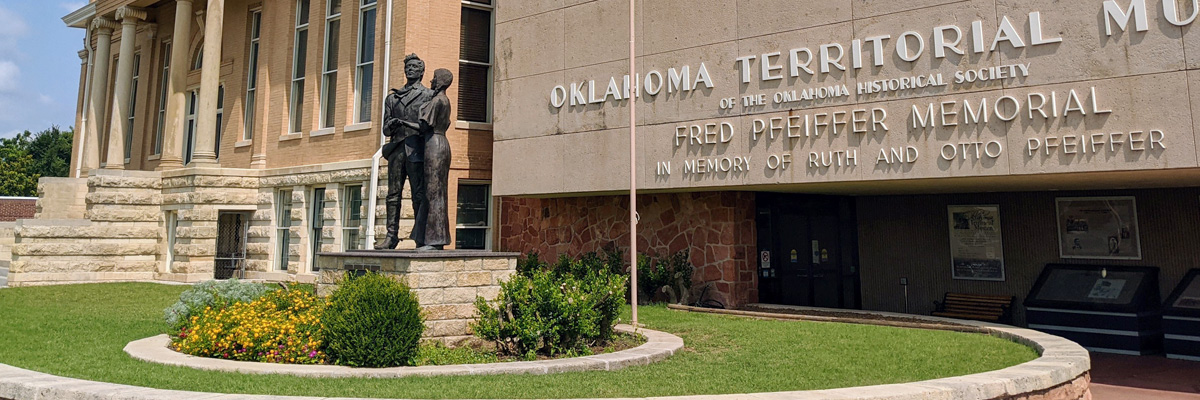
Oklahoma Territorial Museum and Carnegie Library
Oklahoma Territorial Museum and Carnegie Library
406 East Oklahoma Avenue
Guthrie, OK 73044
405-282-1889
michael.williams@history.ok.gov
Director: Michael Williams
Collections Specialist:
Erin N. Brown
Educator:
Julia Moser
Museum Hours
Tuesday through Saturday
9 a.m. to 5 p.m.
| Adults | $7 |
| Seniors (62+) | $5 |
| Students (6–18) | $4 |
| Family (up to 6 people) | $18 |
| Group Rate (10+) | $5/person |
| OHS Members, Children (under 6), Veterans and Active Military (with ID) | Free |
The Oklahoma Territorial Museum and Carnegie Library will be closed on February 18 and 19 for staff training.
Through artifacts, photographs, and paintings, the Oklahoma Territorial Museum and Carnegie Library tells the story of the determined people who laid the foundation for the state of Oklahoma. On the museum grounds stands the Carnegie Library. Preserved by the Oklahoma Historical Society, the library and the museum serve as a visible link between Oklahoma’s turbulent territorial period and the present.
The Carnegie Library, built in 1902, was initially constructed with a grant from the Carnegie Foundation. On November 16, 1907, statehood ceremonies were held on its steps with great fanfare. In 1972, Guthrie’s city leaders announced plans to demolish the Carnegie Library, and Frank Pfeiffer sought to preserve the structure with the addition of a museum. Thanks to Pfeiffer’s efforts, a museum was built on the adjacent lot, officially opening on November 16, 1973. Eventually, the buildings were joined and now coexist as the museum, celebrating 50 years in existence in 2023.
Oklahoma Territory and the Unassigned Lands
Oklahoma Territory was formed in 1890 existed for only 17 years. During that short time, the land was transformed to an area of prosperous farms and growing cities.
In 1889 Congress opened nearly 2 million acres of land for settlement in central Oklahoma. Known as the Unassigned Lands, the area was formerly held by the Muscogee (Creek) and Seminole Nations prior to the Civil War. At noon on April 22, 1889, the day of the opening, thousands of hopeful land-seekers rushed in to stake a claim. At the end of that first day, laws were being established in the cities of Guthrie, Stillwater, Norman, and Oklahoma City.
A homesteader’s first task was the construction of a suitable home. The typical post-run farm dwelling was usually a “soddy,” constructed from bricks of prairie sod, or a dugout built into the side of a hill. The homesteader next turned his attention to the planting of crops. The run occurred too late in the season for a cash crop to be planted, so the new arrivals grew vegetables that they hoped would last through the winter. The following seasons brought only hard times in the form of drought and depression. It was not until 1897 that good crops brought territorial farmers a degree of prosperity.
Not everyone came to the area in search of farmland. Many came to establish businesses or ply trades in the towns that sprang into existence. Along with the merchants, tradesmen, and professionals came saloon keepers, gamblers, and prostitutes, lending a colorful element to the era. In 1890 most of western Oklahoma, including the Unassigned Lands, were accorded territorial status. Guthrie was named the territorial capital.
Explore More
Learn more in The Encyclopedia of Oklahoma History and Culture:
“Carnegie Libraries”
“Guthrie”
“Land Run of 1889”
“Oklahoma Territory”

